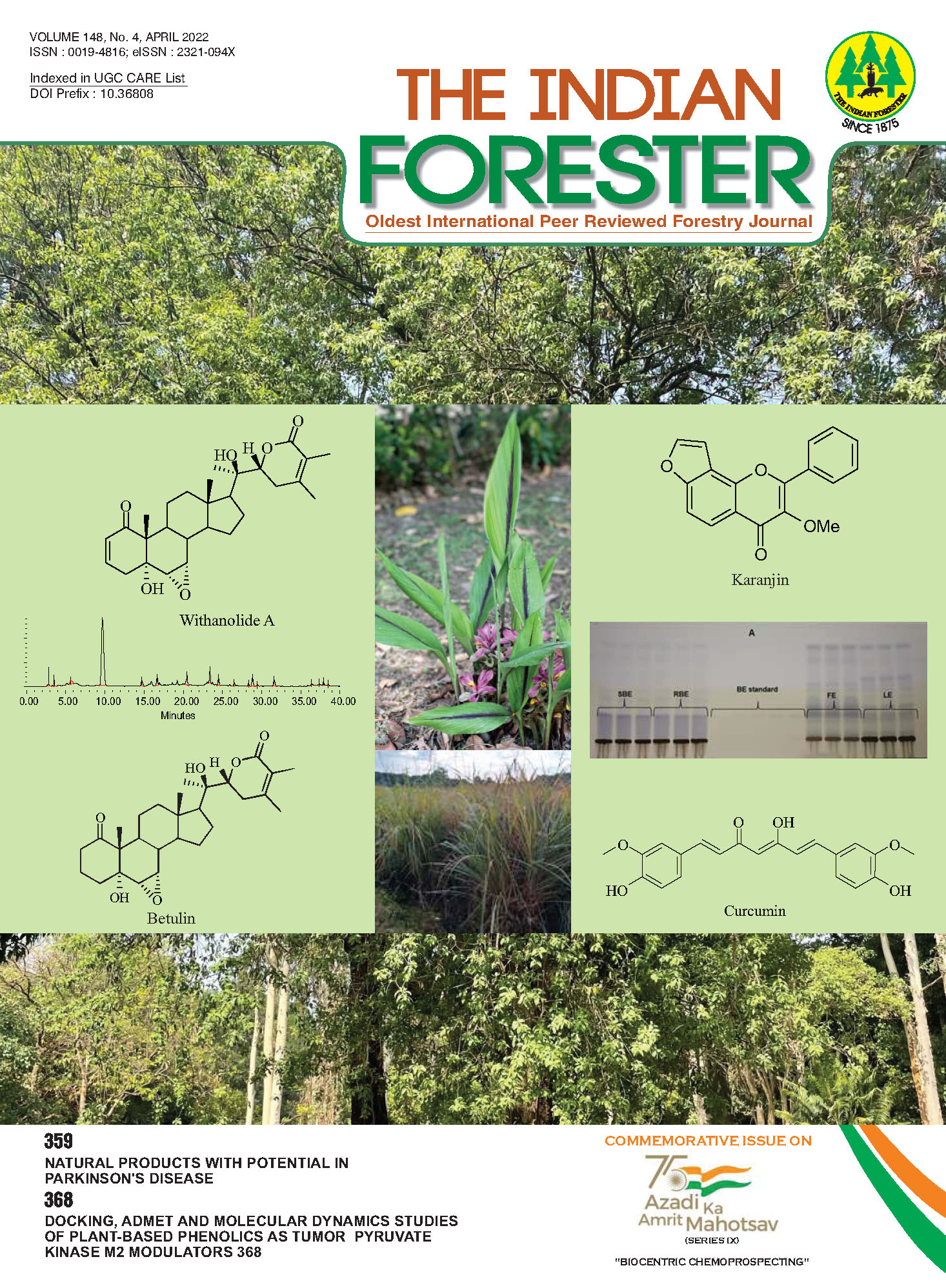Prospects and Perspective of Essential Oil-Bearing Plants: A Case Study of Lemongrass Cultivation in Fallow Land and Chemoprospecting of Essential Oil
DOI:
https://doi.org/10.36808/if/2022/v148i4/169090Keywords:
Uncultivated Land, Lemongrass, Essential Oil, Fractionation, Residue, Biomass.Abstract
India has vast uncultivated areas such as marginalized lands, barren lands, unused land spaces, wastelands, side bunds, and areas having menace of wild/grazing animals. Surprisingly, the uncultivated area is progressively increasing due to various factors. Nevertheless, the unused lands can be utilized for beneficial purposes. Therefore, a case study was undertaken to cultivate lemongrass in uncultivated land and the cost-benefit analysis indicated that it could be a source of decent livelihood generation and an additional income source for village communities. Further, simple steps of essential oil isolation and its fractionation to isolate fine chemicals and enriched fractions, and inclusive utilization of the leftover biomass are extremely useful for enterprise development and employment generation in the hilly and rural areas. Apart from tangible benefits, the approach is also useful for reclamation of uncultivated lands, mitigation of climate change, soil health improvement, reducing the menace of invasive species, and in line with sustainable development goals to achieve a better future for all. The case study could be a model to benefit each member of society and improve the overall economy and environment.References
Adams R.P. (2017). Identification of essential oil components by Gas Chromatography/Mass Spectrometry, edition 4.1, Allured Publishing, Carol Stream, IL, USA, 809pp.
Atal C.K. and Kapur B.M. (1982). Utilization of ligno-cellulosic waste of essential oil Industry. Cultivation and Utilization of Aromatic Plants. Regional Research Laboratory, Council of Scientific and Industrial Research, Jammu-Tawi, pp 754-756.
Devi M.A., Sahoo D., Singh T.B. and Rajashekar Y. (2021). Antifungal activity and volatile organic compounds analysis of essential oils from Cymbopogon species using solid-phase microextraction-gas chromatography-mass spectrometry. Journal of Agriculture and Food Research, Vol. 3 (100110): 1-6.
Kakarla S. and Ganjewala D. (2009). Antimicrobial activity of essential oils of four Lemongrass (Cymbopogonflexuosus Steud) varieties. Medicinal and Aromatic Plant Science and Biotechnology, 3(Sp. issue 1): 107-109.
Liao P., Yang T., Chou J., Chen J., Lee S., Kuo Y., Ho C. and Chao L. K. (2015). Anti-inflammatory activity of neral and geranial isolated from fruits of Litseacubeba Lour. Journal of Functional Foods, 19A: 248–258.
Anon., http://nhb.gov.in/model-project-reports/Horticulture%20Crops/Lemongrass/Lemongrass1.htm Accessed on 25.03.2022.
Pandey A.K., Rai M.K. and Acharya D. (2003). Chemical Composition and Antimycotic Activity of the Essential Oils of Corn Mint (Mentha arvensis) and Lemon Grass (Cymbopogonflexuosus) against Human Pathogenic Fungi. Pharmaceutical Biology, 41(6): 421-425.
Singh M., Shivaraj B. and Sridhara S. (1996). Effect of plant spacing and nitrogen levels on growth, herb and oil yields of Lemongrass (Cymbopogonflexuosus (Steud.) Wats. var. cauvery). Journal of Agronomy and Crop Science, 177: 101105.
Skaria B.P., Joy P.P., Mathew G., Mathew S. and Joseph A. (2012). 18-Lemongrass. Handbook of Herbs and Spices (Second edition), Woodhead Publishing Series in Food Science, Technology and Nutrition, Vol. 2: 348-370.
Downloads
Downloads
Published
How to Cite
Issue
Section
License
Unless otherwise stated, copyright or similar rights in all materials presented on the site, including graphical images, are owned by Indian Forester.





